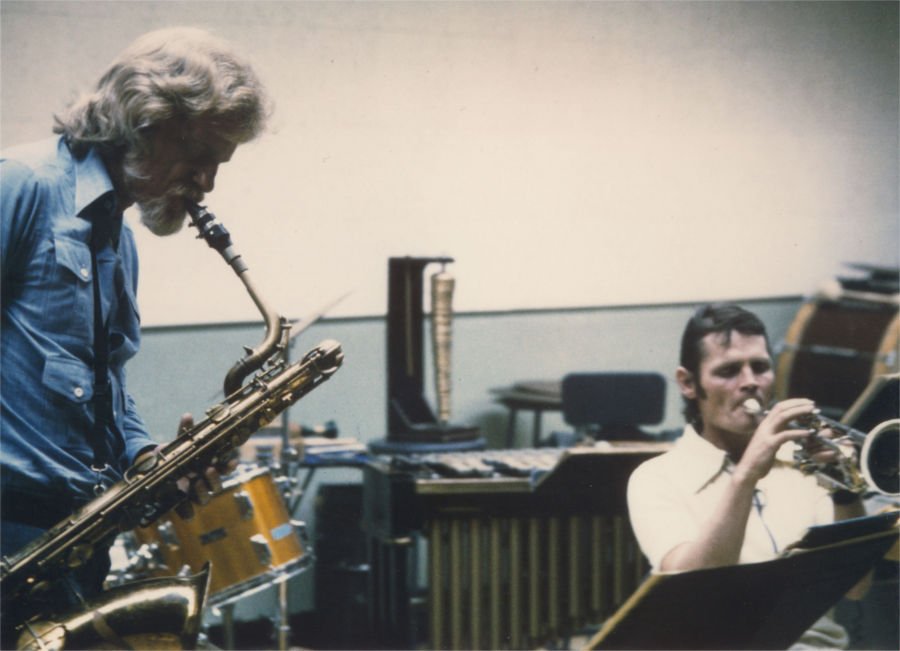[Monday Notes No. 55] Gerry Mulligan was the inventor of the piano-less jazz group. Giving up the harmonic instrument, his quartet consisting of two woodwinds, double bass and drums favored polyphony and the freedom of the soloists, thus creating a new and different sound. Let’s analyze his performance of Bernie’s Tune.
Let’s listen to Bernie’s Tune in the recording taken from The Complete Pacific Jazz Recordings. Right from the exposition of the theme, we notice how the absence of the piano becomes an opportunity for original musical experimentation. At times, even the double bass joins the two winds and plays the melody, instead of performing a typical walking bass.
The first solo is by Gerry Mulligan on baritone sax (0’42”). The saxophonist often plays the notes of the chords, trying to make the harmony of the piece clear, even in the absence of an instrument that actually plays the chords.
Like all great musicians, he adapts his playing to the context. Since the harmonic instrument is missing, the soloist must contribute to the clarity of the music, and that’s exactly what Gerry Mulligan does.
Next we hear Chet Baker’s trumpet solo (1’20”), which moves further away from the theme and harmony, perhaps because the chorus has already been performed several times, and therefore the listener is ready to hear more daring improvisations.
Next we can hear two wind instruments improvising simultaneously (minute 1’58”), the two musicians imitate each other creating a very effective counterpoint.
Bernie’s Tune is a lovely piece composed by Bernie Miller, the A part is in the minor mode and resembles an 8 measure blues:

The central part of the piece (part B) is instead in a major mode and is rather unusual for a jazz standard in that it is based practically on a single chord (B♭), the other chords are in fact transitional and continually lead back to the starting point, a formula known as turnaround.

The extreme simplicity of the piece – part A blues on Dm, part B on B♭ – perfectly reflects the aesthetic of Gerry Mulligan’s group: clarity and poverty of harmony to the advantage of expressive freedom and timbral research.
In this period the relationship between Chet Baker and Gerry Mulligan were still good but later the two had many clashes, mainly due to Chet’s unreliability, until the final break of their friendship. A real pity, because from a musical point of view the two were really well matched.
Until next Monday!


